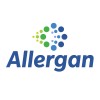
A Study to Define the ECG Effects of Tizanidine Compared to Placebo and the Positive Control, Moxifloxacin,...
SpasticityThis is a single-center, partial-blind, randomized, placebo-controlled, parallel design study with a nested crossover comparison to define the ECG effects of tizanidine compared to placebo and the positive control, moxifloxacin, in healthy men and women. The study will be conducted in a Phase 1 unit with sufficient facilities to house subjects as required by the protocol.

Efficacy Study of Arbaclofen to Treat Spasticity in Multiple Sclerosis
SpasticityMultiple SclerosisThis is a multicenter, randomized (1:1:1), double-blind, active and placebo controlled, parallel group study to evaluate safety, tolerability and efficacy of oral arbaclofen in MS patients with spasticity. Eligible subjects will be removed from anti-spasticity medications for at least one week and then begin study drug treatment with daily doses increasing up to the target dose which will then be maintained for at least 12 weeks. A down-titration will then occur over two weeks.

BOTOX® Treatment in Adult Patients With Post-Stroke Lower Limb Spasticity
Muscle SpasticityThis study will evaluate the safety and efficacy of BOTOX® in the treatment of adult post-stroke lower limb spasticity.

Efficacy and Safety Dose Titration Study of Botulinum Toxin Type A to Treat Spasticity in the Leg...
Spasticity of the Upper and Lower Limb Due to Cerebral CausesThe purpose of this study is to determine whether injections with increasing doses (up to 800 units) of Botulinum toxin type A into muscles of the leg and/or arm are safe and effective in treating patients with spasticity on one body side due to cerebral causes.

BOTOX® Treatment in Pediatric Lower Limb Spasticity
PediatricsMuscle Spasticity1 moreThis study will evaluate the safety and efficacy of BOTOX® (botulinum toxin Type A) in pediatric patients with lower limb spasticity.

Phase III Study of Botulax® to Treat Post Stroke Upper Limb Spasticity
StrokeSpasticityThe purpose of this study is to evaluate the safety and efficacy of Botulax® compared to Botox® reducing upper limb muscle tone in post stroke patients.

Dysport® Pediatric Lower Limb Spasticity Follow-on Study
Cerebral PalsyMuscle Spasticity1 moreThe purpose of this research study was to determine the long term safety and efficacy of repeated treatments with Dysport® used in the treatment of lower limb spasticity in children with dynamic equinus foot deformity due to cerebral palsy.

Study Of GSK1358820 In Patients With Post-Stroke Upper Limb Spasticity
Post-Stroke SpasticityCerebrovascular AccidentThis is a study to confirm the superior efficacy of a single treatment of GSK1358820 over placebo in patients with post-stroke upper limb spasticity of both the wrist and finger flexors using the Modified Ashworth Scale (MAS) wrist score.

Study of a Stationary Cycling Intervention for Children With Spastic Diplegic Cerebral Palsy
Spastic Diplegic Cerebral PalsyThe study is about the effect of an exercise program using stationary bicycling for children with the spastic diplegic form of cerebral palsy. Spastic diplegia is a type of cerebral palsy that involves spasticity or "tightness" of the leg muscles. We hope to learn whether this type of exercise will allow the children to develop improved strength in the muscles that bend and straighten their knees, enhance their level of physical fitness, improve their ability to walk and improve their ability to perform other activities that are important to them. We hypothesize that children who participate in the stationary cycling intervention will gain strength in the muscles that bend and straighten their knees, will be able to complete a 600 yard walk run test (a test of endurance) more rapidly, and will improve their score on a test of function called the Gross Motor Function Measure (a test designed specifically for children with cerebral palsy).

IncobotulinumtoxinA (Xeomin) for Upper Limb Spasticity
Upper Limb SpasticityThis study will investigate the efficacy and safety of incobotulinumtoxinA (Xeomin) in the treatment of arm tightness (upper limb spasticity) using two different dilutions of incobotulinumtoxinA (Xeomin).
